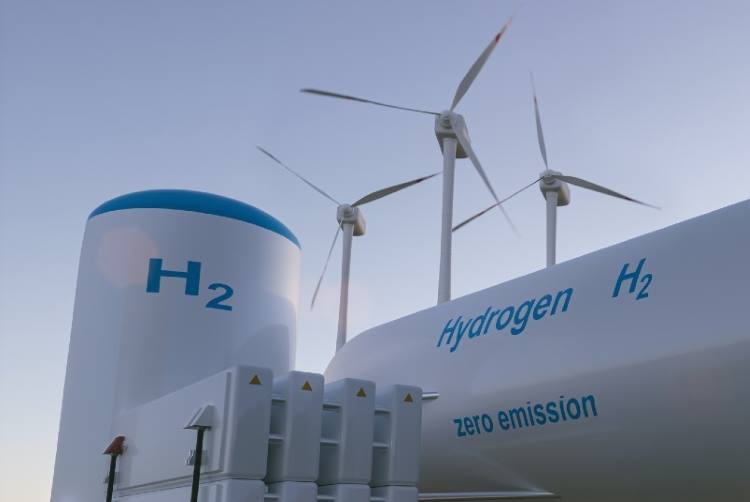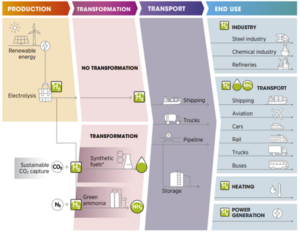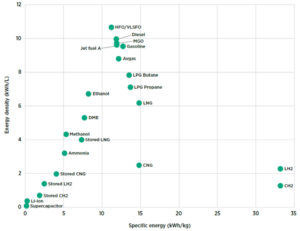
The global transition toward cleaner energy is picking up pace, with green hydrogen emerging as a potential key player, especially in decarbonising the transportation sector. However, the road ahead is filled with both promise and challenges. Green hydrogen, produced using renewable energy to split water molecules through electrolysis, is being heralded as a revolutionary fuel of the future. Its ability to generate power without emitting greenhouse gases makes it an ideal candidate for the future of clean transportation. From buses and trucks to ships and airplanes, green hydrogen offers a path to reducing the carbon footprint of the transportation industry, which remains one of the largest contributors to global emissions.
In Europe, for example, vehicles account for approximately 25% of harmful emissions . In countries like the UK, over 92% of transportation energy comes from fossil fuels . Green hydrogen, when used in fuel-cell electric vehicles (FCEVs), offers a cleaner alternative, producing only water vapor as a byproduct. It has the potential to cut emissions significantly, especially for heavy-duty transport such as trucks, which are responsible for a disproportionate share of pollution.
READ I EVs vs hybrids: Can the electric vehicle market survive without subsidies?
Green hydrogen vs electric vehicles
Bosch, a leader in fuel-cell technology, predicts that by 2030, fuel-cell electric vehicles (FCEVs) will hold a 3% share of the global market for newly registered commercial vehicles weighing over six tonnes, increasing to 10% by 2035 . However, battery-electric trucks are expected to dominate, representing a fifth of the market by 2030 and one-third by 2035 . This implies that while green hydrogen will play a role, particularly in long-haul and heavy transport, battery-electric vehicles (BEVs) may still be the preferred solution for light-duty vehicles and shorter routes.
Interestingly, Bosch is also experimenting with hydrogen-fuelled internal combustion engines (ICE) in India, but the company expects this technology to remain a niche solution compared to fuel-cell trucks. While hydrogen ICEs can leverage existing infrastructure, they face efficiency and scalability challenges, limiting their broader adoption.
Applications in aviation and shipping
Beyond road transport, green hydrogen is making waves in the aviation and maritime sectors, two industries facing immense pressure to decarbonise. Hydrogen can be utilised through thermal conversion in hydrogen combustion engines or electrochemical conversion via fuel cells . For aviation, hydrogen fuel cells offer promise for short-range flights, while thermal conversion could be scaled for longer distances. However, the aviation industry will need to develop new aircraft designs to store and manage hydrogen safely.


Shipping, responsible for nearly 8% of global greenhouse gas emissions, is another sector where hydrogen can make a substantial impact . Passenger and freight ships powered by hydrogen fuel cells could eliminate CO2 emissions, with several companies already developing green hydrogen-based propulsion systems. New technologies, such as breaking down methane into hydrogen and solid carbon, are being explored to reduce the environmental footprint of shipping further.
Green hydrogen in transportation
While the promise of green hydrogen is clear, its widespread adoption is hampered by several challenges. One major issue is the cost. Despite advancements, the production of green hydrogen remains expensive due to the high energy demands of electrolysis. Moreover, hydrogen’s low volumetric energy density makes storage and transportation costly and inefficient compared to traditional fossil fuels.
Safety concerns also surround hydrogen, a highly flammable and volatile gas. Handling and storing it safely requires specialised infrastructure, adding another layer of complexity. For hydrogen to become a viable mainstream solution, significant investment is needed to develop storage, distribution, and refuelling infrastructure at scale.
There are also materials-related challenges. The production of green hydrogen relies on expensive and rare materials, which drive up costs. Innovations in this space, such as using alternative materials like iron and zinc in electrolysers, offer some hope for reducing production expenses .
Innovations in green hydrogen production
Despite the hurdles, innovation continues at a rapid pace. Cutting-edge research from the University of Michigan, for instance, is exploring solar water splitting, which mimics photosynthesis to produce hydrogen from water using sunlight . This could reduce costs and improve the scalability of hydrogen production.
Artificial intelligence (AI) is also playing a role in optimising green hydrogen production by identifying cheaper, more efficient materials for electrolysers. These breakthroughs are crucial for making green hydrogen competitive with fossil fuels in the long run .
Governments and corporations are recognising the potential of green hydrogen and are increasingly investing in its development. In North America, the green hydrogen market is expected to grow at a staggering 62.2% compound annual growth rate (CAGR) from 2024 to 2032 . The U.S. alone has committed to producing 10 million metric tons of green hydrogen annually by 2030, backed by significant public and private investments .
Policy, infrastructure, and collaboration
The future of green hydrogen in transportation depends heavily on policy and collaboration. Governments must establish concrete regulations and incentives to drive investment in hydrogen infrastructure. Europe, North America, and parts of Asia have already introduced strict mandates and emission reduction targets, which are helping to spur the growth of green hydrogen technologies .
Moreover, partnerships between industry leaders like Honda, General Motors, and Bosch are essential for advancing fuel cell technology and scaling production. In the coming years, we can expect to see more closed collaborations aimed at increasing the adoption of green hydrogen across different transportation modes.
Green hydrogen is poised to play a significant role in the transportation sector, particularly for heavy-duty vehicles, aviation, and shipping. While its adoption is currently limited by cost, efficiency, and infrastructure challenges, ongoing innovations and increasing investments offer hope for a cleaner, more sustainable future.
The success of green hydrogen in transportation will ultimately depend on the speed of technological advancements, the availability of government support, and the willingness of industries to embrace this zero-emission fuel. If these elements align, green hydrogen could become a cornerstone of the global effort to combat climate change and decarbonise the transportation sector.
